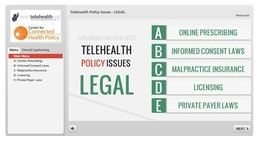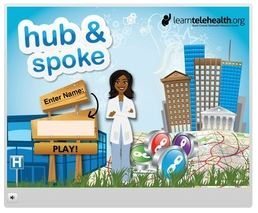 At one point in my professional career, I was a 7th-grade English teacher. I stood in front of approximately 25 adolescents explaining grammar, literature, and proper writing techniques. Each class period was 53 minutes long. If I was lucky, I could keep the class’s undivided attention for a total of 13 minutes – yes, 13 minutes. What would have been really great is if these minutes could have taken place consecutively, but alas, this was not the case. You might be asking yourself, why 13? Why could you not engage your students for longer? Are you a truly horrible teacher? Great questions…a little harsh, but great questions nonetheless. I have discovered that, on average, a person’s attention span is roughly equivalent to that person’s age, in minutes. Thus, a 13-year-old has the attention span of 13 minutes, a 36-year-old, 36 minutes, and so on. Another concept to realize is the fact that if a student was absent, he or she missed out on those valuable 53 (13) minutes of instruction. This anecdote, painfully true as it is, illustrates the need and rationale behind e-learning.
At one point in my professional career, I was a 7th-grade English teacher. I stood in front of approximately 25 adolescents explaining grammar, literature, and proper writing techniques. Each class period was 53 minutes long. If I was lucky, I could keep the class’s undivided attention for a total of 13 minutes – yes, 13 minutes. What would have been really great is if these minutes could have taken place consecutively, but alas, this was not the case. You might be asking yourself, why 13? Why could you not engage your students for longer? Are you a truly horrible teacher? Great questions…a little harsh, but great questions nonetheless. I have discovered that, on average, a person’s attention span is roughly equivalent to that person’s age, in minutes. Thus, a 13-year-old has the attention span of 13 minutes, a 36-year-old, 36 minutes, and so on. Another concept to realize is the fact that if a student was absent, he or she missed out on those valuable 53 (13) minutes of instruction. This anecdote, painfully true as it is, illustrates the need and rationale behind e-learning.
 E-learning is organized in such a way that it can reach multiple learners in multiple ways. It is individualized instruction for individual learners. Courses within the world of e-learning are available 24 hours a day, 7 days a week. This presence enables facilities to distribute training and information to numerous locations and learners, often with the click of a mouse. The dynamic nature of e-learning also permits the updating of content to ensure the most current information is being conveyed. This ease of editing leads to substantial savings on the part of the teaching facility as well. This is especially helpful in the medical field, and therefore pertinent information should be available at all times.
E-learning is organized in such a way that it can reach multiple learners in multiple ways. It is individualized instruction for individual learners. Courses within the world of e-learning are available 24 hours a day, 7 days a week. This presence enables facilities to distribute training and information to numerous locations and learners, often with the click of a mouse. The dynamic nature of e-learning also permits the updating of content to ensure the most current information is being conveyed. This ease of editing leads to substantial savings on the part of the teaching facility as well. This is especially helpful in the medical field, and therefore pertinent information should be available at all times.
The fact that e-learning is distributed using the internet, there are no travel costs incurred in the education/training process. There is less need to send employees to workshops out of town or conferences in tourist destinations filled with distractions. They can accomplish this professional development from the comfort and security of their own office. This access is of great benefit to healthcare providers that are unable to leave their practice to gain this training.
Interactivity also increases with the use of e-learning. It is welcoming to the individual I like to call ‘the reluctant hand-raiser.’ This person can ask questions, offer discussion points, and collaborate with other learners without fear of the cutting eyes of his or her fellow learners…they may be doing it, but at least he or she doesn’t see it.
All of these concepts are great endorsers of e-learning, but there is one that is necessary for all of the others to work properly, and that is chunking material. Breaking up the content into smaller, manageable pieces increases retention and engagement. You are far less likely to fall asleep during a 23-minute television program than you are while watching a 3-hour documentary on the history of the ampersand. Therefore, smaller ‘chunks’ of content are easier to grasp than larger anthologies.
 For these reasons, LearnTelehealth.org offers training and education modules in smaller, easy-to-chew chunks. We know that you do not have all the time in the world to watch a video or really get into a riveting PowerPoint presentation, so we present our telehealth content in short, interactive modules that engage the learner and facilitate comprehension.
For these reasons, LearnTelehealth.org offers training and education modules in smaller, easy-to-chew chunks. We know that you do not have all the time in the world to watch a video or really get into a riveting PowerPoint presentation, so we present our telehealth content in short, interactive modules that engage the learner and facilitate comprehension.
We have also contracted with the site, LearnOnDemand.org, to provide continuing education credit for medical professionals. While we feel gaining the knowledge and participating in the modules is incentive enough, we thought we might sweeten the pot a little by adding CE. Your quest for telehealth expertise begins here.



